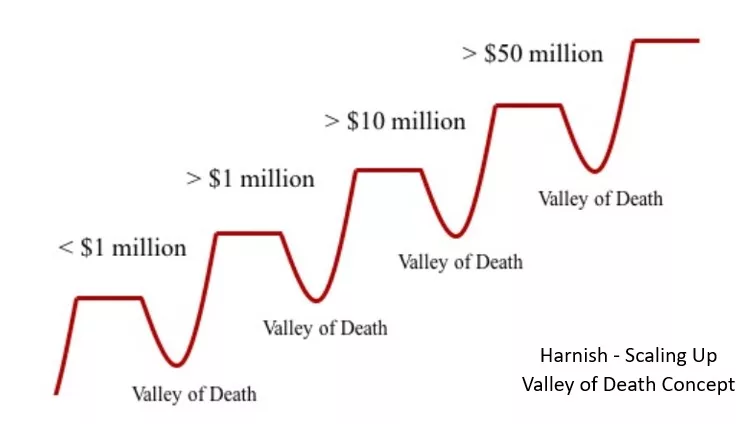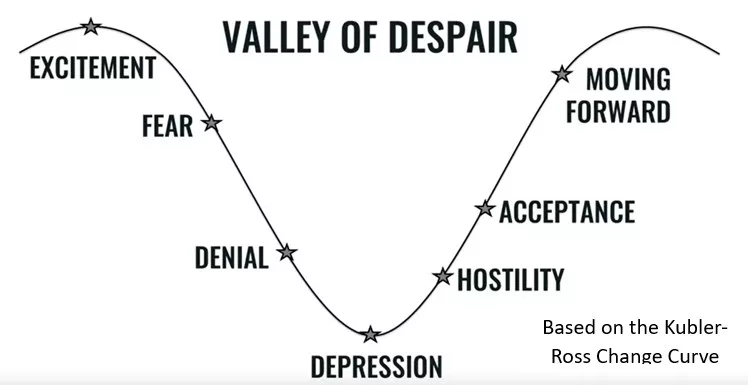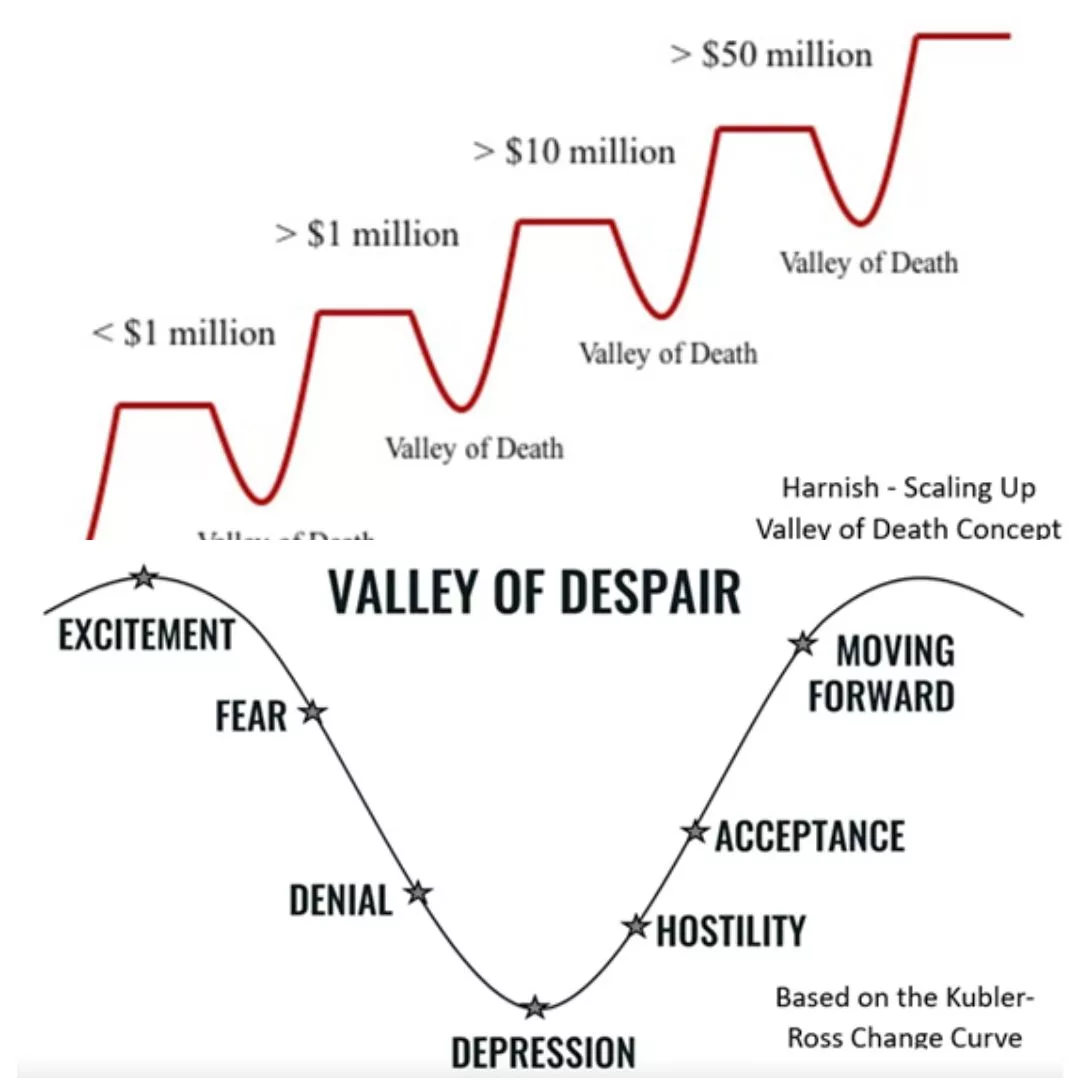There’s a need for significant change today: organizations are not keeping pace with what their desired workforce needs or wants. Can change management help? Yes, when combined with effective leadership.
When significant change is needed
Significant change is often needed somewhere in your organization. What is keeping you from being always open to change?
One concept that helps visualize what happens when change is too little or too late, is the “Valley of Death.”

In the early days of a business, the main reason for its death is lack of cash. “Valley of Death” is a term initially penned to describe the gap between the resources needed to bring a pre-revenue startup to revenue and traction (steady revenue).
Once beyond one million in revenue, businesses can still face a Valley of Death, but it’s not typically for lack of cash. Too often established businesses stall or fail due to individual mindsets and competencies that keep growth at bay or the products or services focused on are not keeping pace with what the market needs or wants.
You may be facing this significant change
In today’s environment, many businesses are facing a different kind of real or potential Valley of Death: that the organization is not keeping pace with what its desired workforce needs or wants.
I see a challenge in how change is addressed.
Organizations of all types are adding people and hiring consultants with change management skills to support them through change. What I see in job descriptions (there are hundreds over just a few recent months) are mostly for the management side of change management. That is: planning, organizing, directing and controlling.
Change management is a competency that a leader should have
Change management is an important competency in a business. It is a competency that a leader should have, and/or enhance with the help of others well versed in change management.
However, take care to not only emphasize the management side of change management. Do get skilled people and trusted advisors around you. Do not expect change to happen without effective leadership—from you. Because “effective” will fit this phrase: manage things, lead people.
Change awareness and acceptance requires leadership
To help explain why your leadership is so important, here’s another model. This model is actually based on the five stages of grief; the emotional stages individuals typically experience during change: denial, anger, bargaining, depression, and acceptance.
Valley of Despair

Yes, grief. Because it is grief that you and others are feeling when challenges are in play and it is inevitable that change must happen to realize a better future. The realization that one needs to change, and the emotional journey of acceptance, can be as hard as or harder than changing. Managing change is simply not enough. Orchestrating change—which requires leadership—is what’s needed.
The Need for Orchestrating Change Beyond Change Management
Orchestrating change is the practice of leading change continuously and proactively, not just reactively or periodically. It includes activities such as:
- scanning the environment for opportunities and threats;
- creating a culture of learning and innovation;
- engaging and empowering people at all levels;
- aligning the vision and strategy, and
- inspiring the best in people.
Orchestrating change is more than just change management or change leadership.
Change management is the discipline that helps plan, organize, direct, and control the technical aspects of change.
Change leadership helps people through a transition.
Orchestrating change involves evolving the workplace culture so that there is a shared vision of the desired future, and the safety and empowerment for others to make voluntary small shifts over time toward that better future, without requiring a formal change initiative.
This orchestration also creates a new way of being and working together that, over time, reduces the need for managing change.
Awareness, then next steps
With this, I hope you are clear now that you must lead others to, and through, change. I call it orchestrating change, and it requires your continued leadership. Before change. During change. After change. Repeat.
I’ll expand on orchestrating change in future posts. Are there aspects of change or models and frameworks you’d like addressed? What change are you resisting? What change do you desire that others are resisting?

Your best next step
For “Your 1 Best Next Step,” think about a change and see if you can identify where you are on the change curve.

